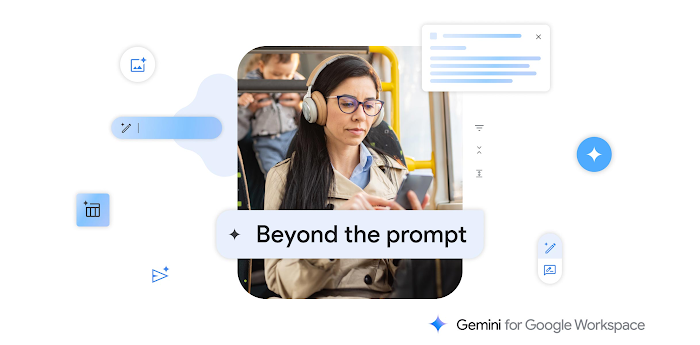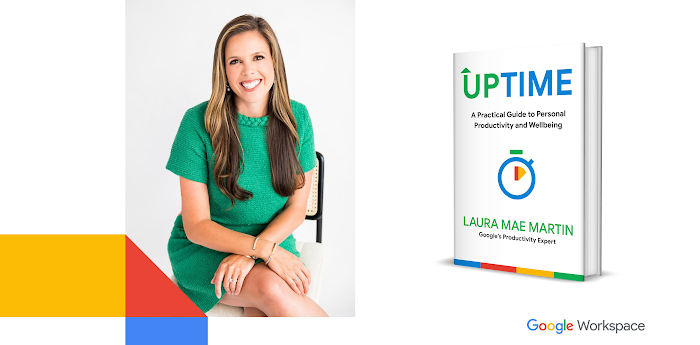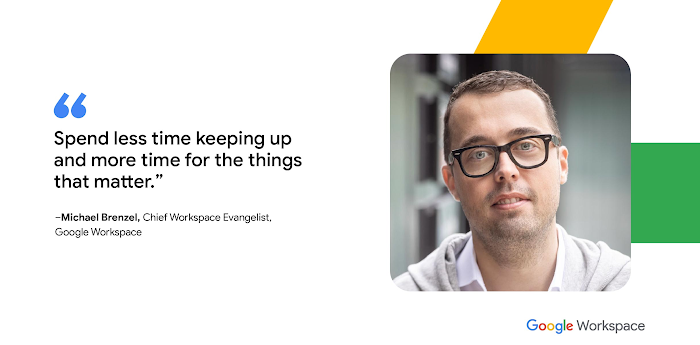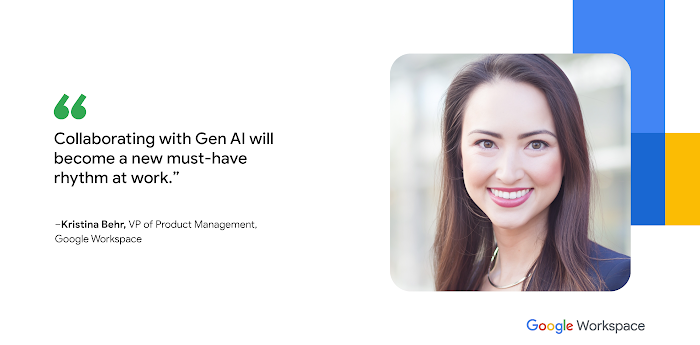Use G Suite to make documents (and other tools) more accessible to people with disabilities

Roger Benz
Program Manager, Accessibility in G Suite
Try Google Workspace at No Cost
Get a business email, all the storage you need, video conferencing, and more.
SIGN UPWhat does “accessibility” mean to businesses? It’s not just about making sure that your office or retail space is accessible to workers and customers who have mobility challenges, it’s also about making sure that your apps, digital tools and content are also more accessible to everyone.
Our product teams work everyday to ensure that tools like G Suite have built-in accessibility features. As a Program Manager, I help create those features and use many of them myself, as I’m blind. With October being Disability Awareness Month, this is a good opportunity to give an overview of product accessibility features that have been available for some time, as well as some new ones.
Listen to content with help from screen readers.
A screen reader is a helpful tool for people who are blind or have low vision. It provides methods to interact and control applications and also converts content on screen into spoken text. With a screen reader and keyboard shortcuts, you can read, edit, and comment on files. Getting started is easy: In Google Docs, Slides, or Sheets, go to the Tools menu, and in “Accessibility settings,” check the “Turn on screen reader support” box. Learn how to turn on screen reader support in Docs.


G Suite supports several screen readers, including ChromeVox, Google’s own screen reader. ChromeVox is automatically built into Chrome devices, like Chromebooks. You just have to enable it. There are many other screen readers you can use with G Suite too; this support guide explains which screen readers work best with which web browsers.
Another way to listen to content is with Select-to-speak, a feature that reads content aloud to you using text-to speech (TTS) to verbalize highlighted content. To try it out, highlight text and activate the select-to-speak button. An example of a select-to-speak tool is the one built into ChromeOS.
See a summary of changes to your documents.
To make it easier for people to keep track of collaborators’ contributions in Google Docs (without having to actively watch every single change), we recently added a feature called Live Edits. Helpful if you use a screen reader or magnification, Live Edits periodically summarizes changes made to a document by collaborators within the sidebar. Learn how to comment and collaborate in Docs using a screen reader.
And for people who are sensitive to visual crowding, we also introduced eight different Lexend font families that have varied widths and spacing to accommodate different reading speeds. Read more details about these font options.
Use voice typing to “write” by speaking.
Voice typing is a powerful productivity tool for everyone, including those who do not use a keyboard. It’s especially useful for people with low vision or with motor disabilities that may prevent them from using keyboards, mice or trackpads. When you speak into the computer’s microphone, voice typing uses artificial intelligence (AI) to convert your voice into text. In Docs, you can even use voice commands to select and edit text—for example, bolding words or cutting and pasting text.


Add closed captioning to presentation slides and meetings.
If you’re presenting slides or in a video meeting, you can add closed captioning. You don’t need to write the captions yourself—your computer’s microphone and Google’s machine learning tools automatically create captions as you speak and display them at the bottom of the screen.
To use captions in Slides, click Present at the top right of your Slides screen, then click “CC” in the toolbar at the bottom of the screen. Learn how to present Slides with closed captioning.

This year, we also added support for automatic captions in Hangouts Meet so that when you’re in a video meeting, it’s possible to add captions, too. Keep in mind that the steps for adding captions to a video meeting can vary depending on the device you use–find instructions for closed captioning in video meetings for computers, Chrome devices, and Hangouts Meet hardware.
Get through your inbox faster with accessibility features.
Combing through emails can be tedious and time consuming. Previously, people using a screen reader would hear sender, date, subject, a snippet and more when arrowing thru their inbox. Now they have an alternative to reduce the verbosity of what they hear when they go through emails. By first arrowing right to a column such as “sender” or “subject,” people using screen readers can then down arrow and hear only that type of information. This helps people focus on only the information they need, saving time and reducing fatigue.
We also recently introduced a new spelling and grammar tool in Gmail that’s powered by machine learning. It adds more functionality and a new keyboard interaction model (i.e. Left click and tab) while maintaining concise informative verbalizations and the existing right click keyboard interaction model.
The Blind Institute of Technology customizes G Suite apps for greater accessibility.
The need for accessibility can drive innovation. The Blind Institute of Technology (BIT), a nonprofit that helps businesses find accessibility solutions and hire people with disabilities, is staffed by people who are blind or have low vision. To help workers gather information from clients and job applicants, BIT staffers combined a screen reader, voice typing, and some under-the-hood programming in Apps Script. Workers can use voice typing to capture information, which is then collected in Forms and fed directly into Salesforce, where BIT stores customer records. Watch BIT’s presentation at Google’s recent Cloud Next conference for a deep dive into the custom Forms tools.
Making work more inclusive with G Suite
There are many ways to make documents, spreadsheets, and presentations more accessible to more people—for example, adding alternative text to photos and graphics to help people who are blind or have low vision understand the purpose of your images. Check out tips on how to make your work more accessible.
To learn more about these accessibility features and others, read this G Suite user guide to accessibility (or this G Suite Admin guide to accessibility if you’re an IT administrator) for a list of features that are built into G Suite tools. Also, watch this video about G Suite and Chrome Accessibility Features that I presented during Cloud Next ‘19.



